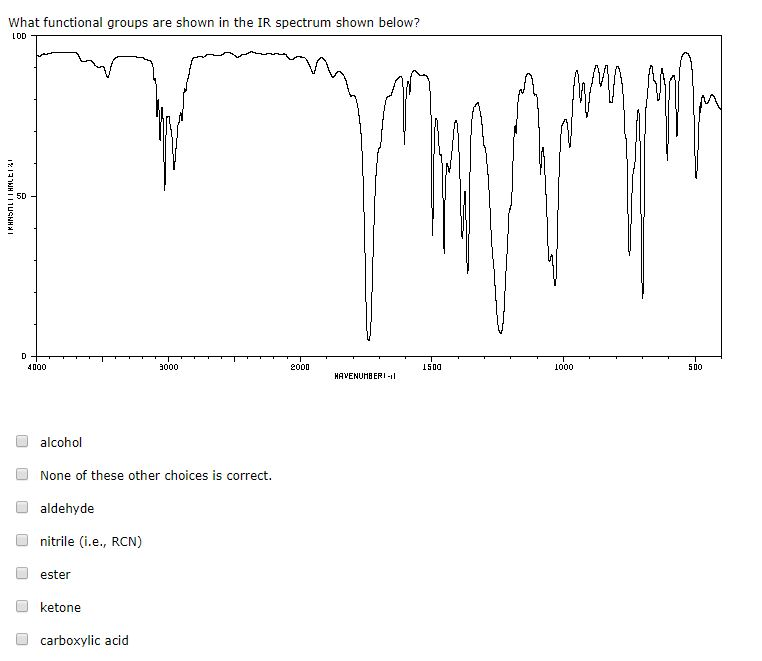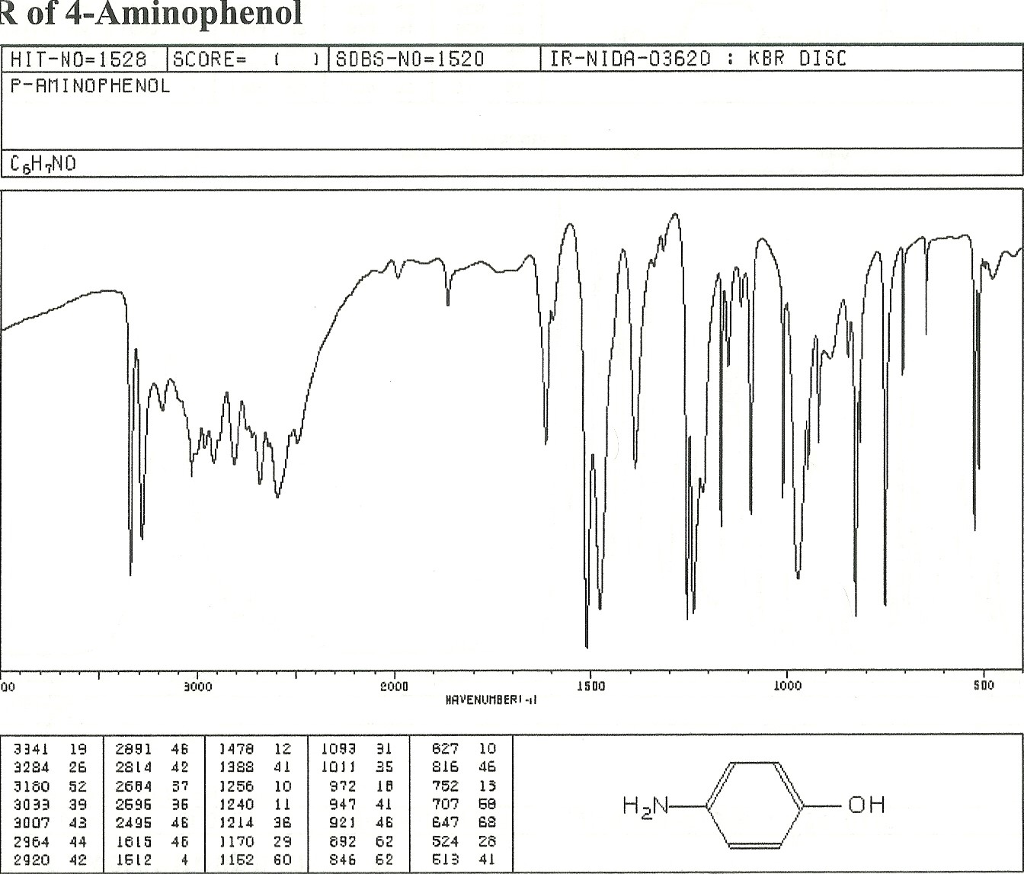


The table below lists the characteristic IR absorptions of some common functional groups. In general, it is harder to stretch than to bend so stretching vibrations tend to occur at higher frequencies (and wavenumbers) than bends.Vibrational frequencies (and wavenumbers) for bonds involving the lightest element, H, are high and.Vibrational frequencies (and wavenumbers) increase in the order: single When the mass of the atoms is small, the vibrational frequency (and wavenumber) tends to be high. Bonds which are strong act like springs which are stiff: k is large and so is the vibrational frequency (and wavenumber). The vibrational frequency of a bond is given by the formula opposite where k is the bond force constant and m is the effective mass of the atoms. When it is stretched or compressed, there is a restoring force that acts to pull the atoms back.

IR spectoscopy can be used to indicate the presence and absence of functional groups in organic compounds.Īlongside the wavenumber of the absorption (the x- axis on the IR spectrum), the amount of IR radiation absorbed (the y-axis on the IR spectrum) can also be characteristic of the functional group.Ī bond connecting 2 atoms acts rather like a spring connecting 2 masses. This leads to the most common and important use of IR spectroscopy in organic and biochemistry: The energy required to vibrate a functional group such as a carbonyl (C=O) or alcohol (O-H) is often very similar in different compounds and so molecules containing these functional groups show IR bands at wavenumbers which are characteristic of these groups. However, the IR spectra of related molecules often absorb at very similar and distinctive wavenumbers. The IR spectrum of each molecule is different and can be used to identify it if its spectrum is on a database or library (see ' Fingerprint Region'). Even simple organic molecules contain many bonds and have complex IR spectra.


 0 kommentar(er)
0 kommentar(er)
